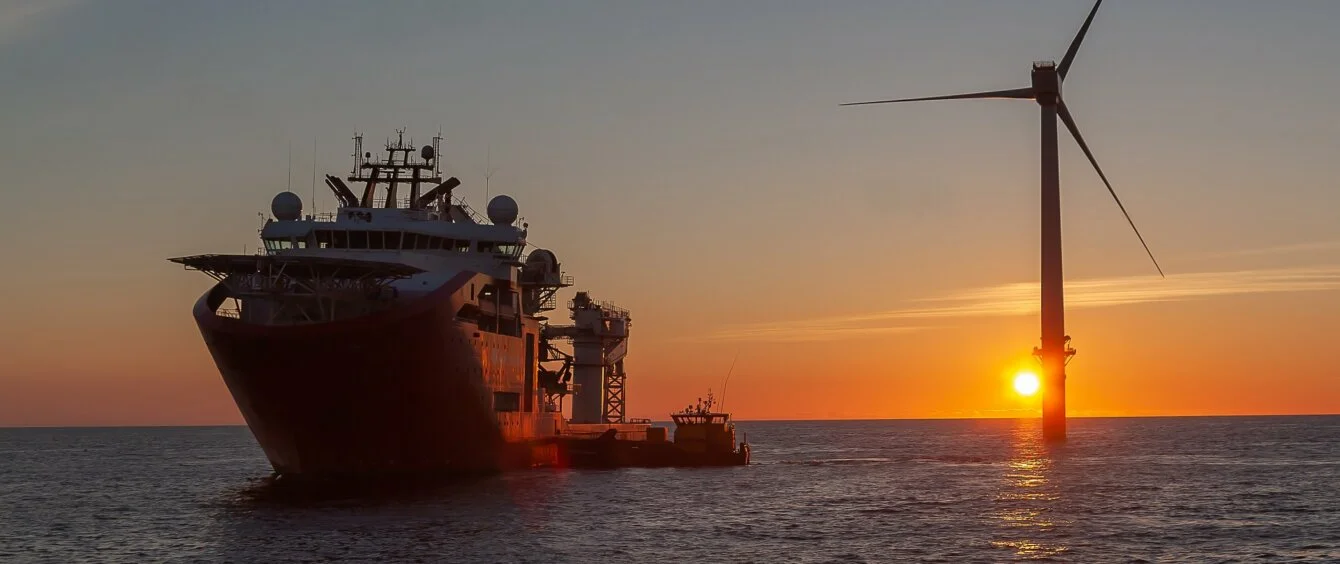Offshore wind generation is not carbon neutral, but it is very low carbon — just 6 grams of carbon dioxide for every kWh of electricity produced. This compares to about 900 g/kWh for a coal-fired plant, according to the US Energy Information Administration Annual Energy Outlook 2021.
To date, no power technology has yet achieved complete carbon neutrality over its entire lifecycle. Renewable technologies, such as wind and solar generate carbon-free electricity, but emissions result from their construction and decommissioning.
Consultants Wood Mackenzie estimate that 86% of wind’s lifecycle emissions come from mineral extraction and turbine manufacture, while the remaining 14% result from transportation, installation and operation.
But even at the current low level, the industry is seeking ways to reduce its carbon footprint further.
Electrification key route for offshore wind emissions reductions
In January, industry leader RWE joined with other offshore wind developers in a partnership with the UK’s Carbon Trust to develop a clear methodology to measure and address offshore wind’s lifecycle carbon emissions. The aim is to achieve carbon neutrality via the Offshore Wind Sustainability Joint Industry Programme.
Many of offshore wind’s emissions relate to material production – for example, greenhouse gases (GHG) emitted during the production of cement or steel. By ensuring that the electrical inputs into these processes are renewable, offshore wind’s emissions can be reduced below even 6g/kWh.
Ultimately, renewable energy — either directly or indirectly using green fuels — will power the upstream industries on which the renewable energy technologies themselves depend, creating a virtuous circle of renewable energy production and use.
However, there are other areas, more directly under the control of wind farm developers, where electrification can reduce emissions in the short to medium term, for example by electrifying the offshore vessels necessary for wind farm construction.
Electric mothership
One such project is taking place in Japan, a market where RWE has already established a presence.
Earlier this year, UK company Zephyrus Marine announced that it had signed a memorandum of understanding with Japan’s Mirai Ships to build a ‘mothership’ capable of recharging electrically-powered, zero emissions crew transfer vessels (CTVs).
Japan had just 61 MW of offshore wind installed as of the end of 2022, according to the International Renewable Energy Agency’s Renewable Capacity Statistics 2023. Current capacity is 139 MW.
However, the country has a target of 10 GW under construction by 2030 and up to 45 GW by 2040. 1.7 GW of capacity was awarded in auctions in 2021 for start-up in 2028-30, and a second round concluded on June 30 this year for 1.8 GW, although the winners have yet to be announced.
The mothership acts as an offshore recharging point, but won’t directly recharge the CTV batteries. Instead, a modular concept is being employed in which a fully-charged battery – ‘an e-pod’ — replaces one with a low charge.
This swap-in, swap-out process is expected to take less than 15 minutes — faster than refuelling a fossil fuel-powered vessel. The e-pod can then be recharged on the mothership, while the CTV maximises its useful time on the water with a fully-charged battery.
The e-pods come from Shift Clean Energy, using its pay-as-you-go PwrSwäp system, which will also be used in the first all-electric cargo vessel, the Hydromover, which started construction in Singapore last September. Once in operation, the Hydromover is expected to reduce fuel costs by 77% and save some 752 tonnes of GHG.
Similarly, deploying the system in conjunction with Zephyrus Marine’s vessels is expected to reduce both fuel costs and emissions from the emergent Japanese offshore wind sector.
